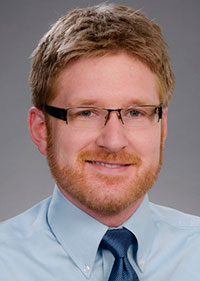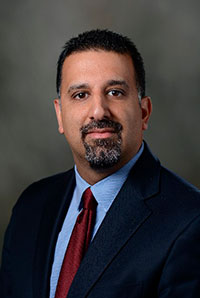Article:
Keller JM, Claar D, Ferreira JC, Chu DC, Hossain T, Carlos WG, Gold JA, Nonas SA, Seam N. Mechanical Ventilation Training During Graduate Medical Education: Perspectives and Review of the Literature. Journal of Graduate Medical Education. 2019;11(4):398-401. https://doi.org/10.4300/JGME-D-18-00828.1
Summary:
This paper is a narrative review of available literature regarding best practices for mechanical ventilation (MV) education within graduate medical education. They identified only 15 studies that met inclusion criteria. Current assessment tools of MV knowledge are largely case-based multiple-choice tools, with a minority using bedside evaluation with performance checklists. Up to 50% of trainees were dissatisfied with their MV education. The authors concluded that best practices should include creating standardized learning objectives with incorporation of simulation interventions. They suggested the development of specialty-specific competency standards and reinforced the need for validated assessment tools to be used across training programs. For this blog post, Haala Rokadia interviewed authors Jonathan Keller and Nitin Seam.
Interview:
HR: Based on your review, what components do you feel make up the optimal mechanical ventilation curriculum?
JK and NS: We must preface this answer by saying that our review found a paucity of data to answer this question, among others, but we’ll give it our best shot. From the few papers that studied curricular effects, it does appear that incorporating simulation in a mechanical ventilation curriculum is effective. More specifically, incorporating simulation with case-based scenarios was both highly rated by trainees and conferred improvement in ventilator knowledge and skills compared to other teaching methods.
At a bare minimum there should be mechanical ventilation-specific learning objectives established. This provides a framework for the development of a curriculum, which may vary depending on trainee level and the institution. It is surprising how few programs have learning objectives.
HR: The assessment tools that are described seem to differentiate proficiency based on level of training. Do you suggest that these could be incorporated at the end of training in order predict whether a graduating physician should have privileges to manage the ventilator independently?
JK and NS: Not at this point. There have only been a few studies of assessment, so there is no gold standard summative assessment out there (at least we didn’t find one). We think there are two separate issues being addressed here. One is evaluation of competency, having a bare minimum set of skills. Proficiency implies a higher-level skillset, or mastery. In an ideal world we would have assessment tools for both, as they serve different purposes. But this is an uncharted area for mechanical ventilation. We think simulation can play a role in either assessment, but optimal assessment represents the biggest educational gap in our opinion. Developing and validating a [gold standard summative assessment] is a great project for our community of critical care educators!
HR: Should objectives for mechanical ventilation training be standardized to meet specialty specific competencies?
JK and NS: We think that’s a reasonable aspiration but still have a ways to go. As a start, we suggested that programs that train clinicians to manage critically ill patients should establish or adopt specific mechanical ventilation learning objectives. It gets complicated to define those for each individual practice since mechanically ventilated patients are managed by clinicians with so many different training backgrounds. For example, hospitalists frequently manage ventilated patients but they have not gone through critical care fellowship training. And from a training perspective, what a resident in internal medicine needs to know is different from a critical care fellow. For critical care fellowships, we do think we should work on this. Shouldn’t our expectation be that every fellow who graduates a critical care fellowship develop an expertise in mechanical ventilation? To do this, fellowships should have a shared framework of what that requires.
HR: Simulation appears to be an effective training methodology for mechanical ventilator education. Should this technique be used in a short-term intensive boot camp model to introduce mechanical ventilation to trainees or should it be used longitudinally in order to enhance and build complexity on top of prior mechanical ventilation education?
JK and NS: The short answer is yes! Not to sound like a broken record, but there is an absence of great evidence here. The two studies that showed improved bedside outcomes after mechanical ventilation training were simulation-based boot camps. It makes logical sense that continued training while introducing advanced concepts after an initial boot camp will further enhance learning. Another benefit of a longitudinal curriculum would be to incorporate ventilator management into other scenarios as part of a comprehensive care curriculum. There isn’t much data in regard to longitudinal education but we have a consortium of fellowships looking at this and hope to publish our findings soon.
HR: Many companies are developing ventilators with advanced modes that can facilitate ventilator weaning and closed loop systems that can self-correct so to minimize respiratory therapist workload. How should these technologies be integrated into trainee learning?
JK and NS: Since mechanical ventilation is a complex topic, we believe we should first ensure trainees know the basics. Our opinion is that critical care fellows should learn the basic modes of ventilation, become expert at interpreting ventilator waveforms, be able to implement lung protection ventilation, manage auto-PEEP, and anticipate the effects of changing clinical conditions in each of these modes. They must first understand the underlying physiology and principles of mechanical ventilation. Once that is achieved, studying advanced concepts like work of breathing and use of NAVA, PAV, etc. makes sense. That’s our approach.

Blog post author
Haala Rokadia is a Pulmonary and Critical Care Medicine Physician who trained at the Cleveland Clinic, and who currently works at the Baylor University Medical Center at Dallas. Her clinical research experience is in interstitial lung disease and sarcoidosis. She has keen interest in Women as Leaders in Medicine and the transformative role of Healthcare Technology. She enjoys international travel, contemporary art, and theater.
Twitter handle: @HRokadiaMD

Article author
Jonathan Keller is a clinical instructor at the University of Washington in the Division of Pulmonary, Critical Care and Sleep Medicine. He also completed the American College of Surgeons Accredited Education Institutes Simulation Fellowship. His educational interests include simulation-based procedural and cognitive training.
Twitter handle: @JonKellerMD

Article author
Nitin Seam is the Associate Chief of Critical Care and the Fellowship Program Director at the NIH Clinical Center, Bethesda, MD. He is a Clinical Associate Professor of Medicine at George Washington University. He is the inaugural Editor-in-Chief of ATS Scholar, the American Thoracic Society education journal. He is also the Chair of the Society for Simulation in Healthcare Critical Care Section. His educational interests include web-based learning, simulation and mechanical ventilation.
Twitter handle: @NitinSeam



